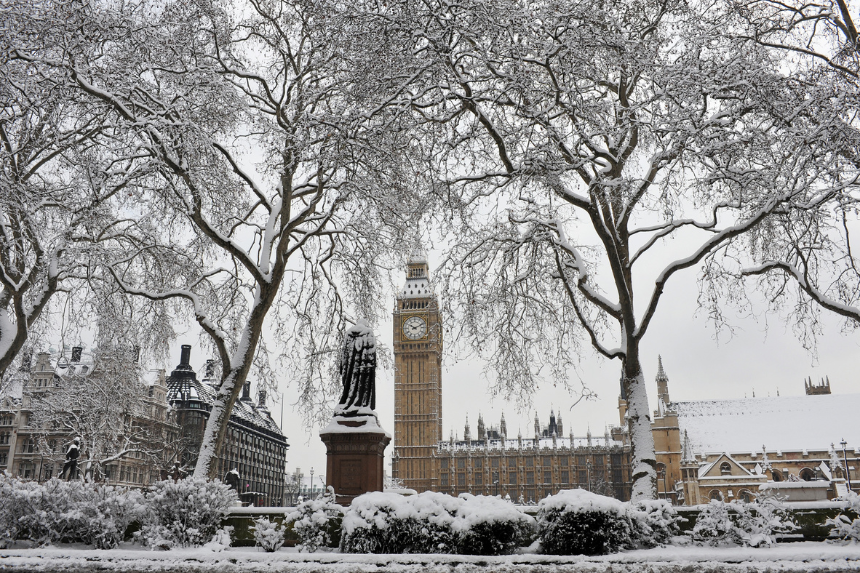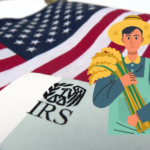Freezing temperatures and heavy precipitation are anticipated to cause significant transport difficulties over most of the UK on Wednesday morning, particularly around rush hour. As the nation gets its first snowfall of the season, yellow weather warnings have been issued, and Tuesday’s closures of over 200 schools follow. Along with the danger of rural areas being cut off, the weather is predicted to bring frozen roads and power outages.
- How Are the Yellow Weather Warnings Impacting the UK?
- What Snow and Ice Hazards Are Expected in the Coming Days?
- How Cold Will Temperatures Get in the Coming Days?
- What Travel Problems Have Been Caused by Snow and Ice?
- What Is the Health Risk Posed by the Cold Weather?
- How Can People Access Cold Weather Payments or Support?
How Are the Yellow Weather Warnings Impacting the UK?
On Wednesday night, the Met Office issued warnings on temperatures falling to -12°C in rural portions of Scotland and -7°C in rural sections of Wales. Yellow weather warnings include portions of western Scotland, Northern Ireland, eastern and northern England, and northern England. The revised yellow notice for Wales predicts snow and ice across the nation; southern and central England warnings will be adequate until 10:00 AM on Wednesday.
The Met Office advised, “A yellow warning means there is a significant risk of disruption to travel, with icy ground posing a danger of slips and falls”. They also counselled individuals to use caution, mainly if they must travel.
What Snow and Ice Hazards Are Expected in the Coming Days?
Forecasters estimate that locations along the North Sea coast may see snow showers as snowfall falls over some sections of the United Kingdom; up to 10 cm (4 inches) of snow might gather on higher ground. Roads will be icy; hence, drivers are advised to be careful cause travel delays are more likely to result.
The Met Office statement on X said: “Roads are expected to be treacherous, and we urge everyone to take extra care if they have to be out and about”. Public transportation may also suffer from the snow and ice, especially in rural locations where access may be drastically limited.
How Cold Will Temperatures Get in the Coming Days?
The temperatures for the next few days are expected to be substantially below the norm for mid-November. London’s temperatures by Friday might drop to -2°C, Birmingham’s to -4°C, and northern areas might witness lows of -7°C. London’s average November temperature is usually approximately 11°C during the Day and five °C at night; hence, this cold spell marks a dramatic dip.
“With temperatures in Braemar, Aberdeenshire, reaching a low of -11.2°C, Monday saw Scotland record its coldest early winter night since 1998.” The severe cold is predicted to last the whole week, resulting in more travel and disturbances connected to the weather.
What Travel Problems Have Been Caused by Snow and Ice?
For many drivers, Tuesday’s snow was “the first taste of winter” and some of the worst road conditions seen all year. In Aberdeenshire, ice road conditions resulted in a bus overturned in New Leeds; fortunately, no casualties were suffered. Snow elsewhere created travel havoc throughout Wales. The A44 in Powys became inaccessible, while collisions on snowy roads closed the A55 eastbound near Caerwys in Flintshire.
With delays and concealments hitting train and bus services throughout the nation, Transport for Wales stated that 13% of its services had been delayed by bad weather. “Everyone should travel ready in case they find themselves broken down at the side of the road,” an RAC spokesman added. “Essentials include a blanket, a warm waterproof coat, gloves, robust shoes, and a mobile power bank.”
What Is the Health Risk Posed by the Cold Weather?
With an amber cold weather health notice issued by the UK Health Security Agency (UKHSA), vulnerable populations in many areas—including the East of England, East Midlands, West Midlands, North East, North West, and Yorkshire and the Humber—are warned of elevated danger. Additionally, taxing health services throughout the nation could be the cold snap.
Dr Agostinho Sousa, head of extreme events and health protection at UKHSA, advised that “it is vital to check in on vulnerable friends, family, and neighbours to ensure they are well prepared for the start of cold weather”. This is especially important for older adults or those at enhanced risk.
How Can People Access Cold Weather Payments or Support?
People in the UK can qualify for cold weather payments, a government benefit top-up to aid with fuel expenditures during icy conditions. Those eligible already receive some benefits and satisfy other requirements, such as seven straight days of temperatures at or below freezing.
The government said: “The average temperature in the local area must be 0°C or lower for seven days in a row, or the temperature must be forecast to drop below freezing for seven consecutive days.” Weather stations close to a claimant’s postcode help to ascertain eligibility. While Winter Heating Payments are available in Scotland, England, and Wales, people can verify their eligibility by entering the first part of their postcode on the government’s website. Residents of Northern Ireland can also verify eligibility for cold weather aid on another website.
Authorities advise everyone to be ready for the continuous cold snap and stay safe in the coming days as the UK prepares for more severe winter conditions.
Ford to Cut 800 Jobs in the UK as Part of European Restructuring Plan








